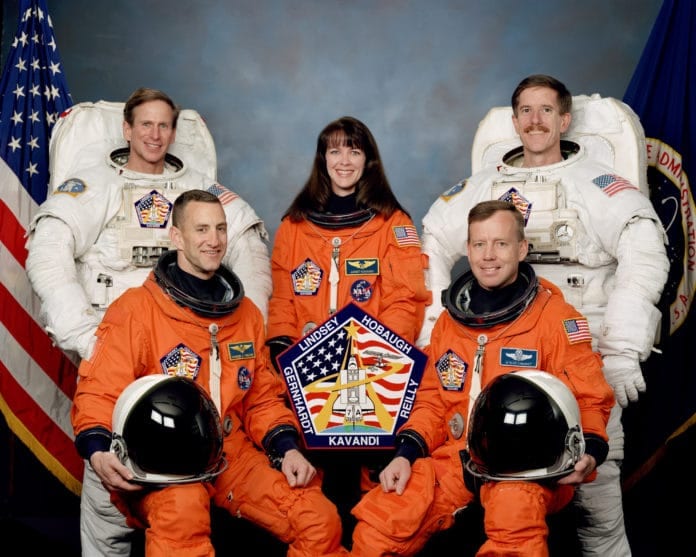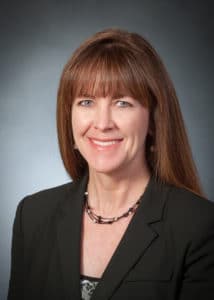

Astronaut, scientist and Hall of Carthage Heroes inductee Janet Kavandi will be inducted into the United States Astronaut Hall of Fame in a ceremony in Florida in April.
The Astronaut Scholarship Foundation, the group which oversees selection into this esteemed honor, announced in December that Kavandi and Astronaut James F. Buchli will become the 98th and 99th inductees into the Astronaut Hall of Fame, located at the Kennedy Space Center Visitors Center in Florida.
An official ceremony and gala will take place at Kennedy Space Center Visitor Complex on April 6, 2019.
“Courage, dedication and passion are qualities that define true American heroes, and both Buchli and Kavandi possess them,” said Curt Brown, chairman of the Astronaut Scholarship Foundation’s Board of Directors in a written release. “It’s an honor to be associated with individuals who are so dedicated to NASA’s mission and who share our goal to learn more and go further. We are delighted to be adding James and Janet to the elite group of men and women who have been inducted into the U.S. Astronaut Hall of Fame.”
STS-91, STS-99 and STS-104
Kavandi, who was valedictorian of the Carthage High School class of 1977, flew on three U.S. Space Shuttle missions before moving into administration at the National Space and Aeronautics Administration, NASA.
She served as a mission specialist on STS-91 in 1998, STS-99 in 2000 and STS 2001 in 2001.
According to the bews release from the Astronaut Scholarship Foundation, Kavandi has logged more than 33 days in space, traveling more than 13.1 million miles in 535 Earth orbits. She moved on to work at NASA Johnson Space Center in Houston, where she served as the Director of Flight Crew Operations, responsible for the Astronaut Corps and aircraft operations at Ellington Field.
Kavandi also served as the deputy director of the Health and Human Performance Directorate, responsible for the NASA flight surgeons and human research investigations on the International Space Station (ISS).
Currently, she is the Director of the National Aeronautics and Space Administration’s John H. Glenn Research Center in Cleveland. Her work has been recognized with a Presidential Rank Award, two NASA Outstanding Leadership Medals, two Exceptional Service Medals and three NASA Space Flight Medals.
Jasper County roots
 Kavandi overcame tragedy at a young age, losing both her parents in a plane crash at age 8, then moving to Carthage to be raised by her aunt and uncle, Mr. and Mrs. Ed England.
Kavandi overcame tragedy at a young age, losing both her parents in a plane crash at age 8, then moving to Carthage to be raised by her aunt and uncle, Mr. and Mrs. Ed England.
According to the Hall of Carthage Heroes, She graduated from Carthage High school in 1977 and was class Valedictorian.
Kavandi graduated Magna Cum Laude with a Bachelor of Science Degree in chemistry from Missouri Southern State University in 1980, then earned a Master of Science Degree in Chemistry from Missouri University of Science and Technology in 1982, and then went to work for Eagle-Picher in Joplin, using her chemistry degree to assist in new battery development for defense applications.
In 1984, Janet took a position as an engineer in the Power Technology Department of Boeing Aerospace Company in Seattle.
In 1986, she was accepted into graduate school at the University of Washington – Seattle, and received her doctorate in analytical chemistry in 1990. She holds two patents on pressure indicating paints, the subject of her doctoral dissertation.
Kavandi was named the Outstanding Alumnus at Missouri Southern State University in 1995.
In space
Kavandi was selected as an astronaut candidate in 1994 by NASA and reported to NASA in 1995. After a year of training, she was assigned to the Payloads and Habitability Branch where she supported payload integration for the International Space Station.
She served as a mission specialist astronaut on STS-91, the final Shuttle/Mir partnership mission. Later she worked as a spacecraft communicator in NASA’s Mission Control Center.
Her second mission was aboard STS-99, which was the Shuttle Radar Topography Mission that mapped more than 47 million miles of Earth’s land surface to provide data for a highly accurate three-dimensional topographical map.
In 2001, she served aboard STS-104, whose mission was to add the airlock to the International Space Station.
NASA administration
In 2005 she accepted the post of Deputy Chief of the Astronaut Office, and in 2008 she became Deputy Director, and then Director of Flight Crew Operations at the Johnson Space Center, responsible for the Astronaut Corps and NASA flight operations at Ellington Field.
In March 2015, she was named Deputy Director of the Glenn Research Center in Cleveland, Ohio, where she continues to serve at the cutting edge of research into the systems that will take the U.S. back into space on U.S.-made vehicles for the first time since the retirement of the Space Shuttle.
She was mentioned early in 2018 as a candidate for deputy director of NASA by the current NASA Administrator James Bridenstine, although President Donald Trump ended up naming another individual to that post.
Kavandi told The Carthage Press in 2018 that her position at the Glenn Research Center neatly combines much of the work and many of her interests she’s held throughout her career.
“I still get to do my space stuff, which is good, but I also get to do some of my chemistry,” Kavandi said. “My PhD dissertation was on aeronautics projects, so having some of the aero background has been very helpful, plus having a degree in chemistry has helped with the materials research that’s done here and the power research. The energy storage, battery stuff is something I worked on at Eagle Picher there in Joplin for years. So everything I think I’ve worked on throughout my career either in energy storage, chemistry background, the crew office, and aeronautics and space, it’s all come together and helped me do this job here.”



















